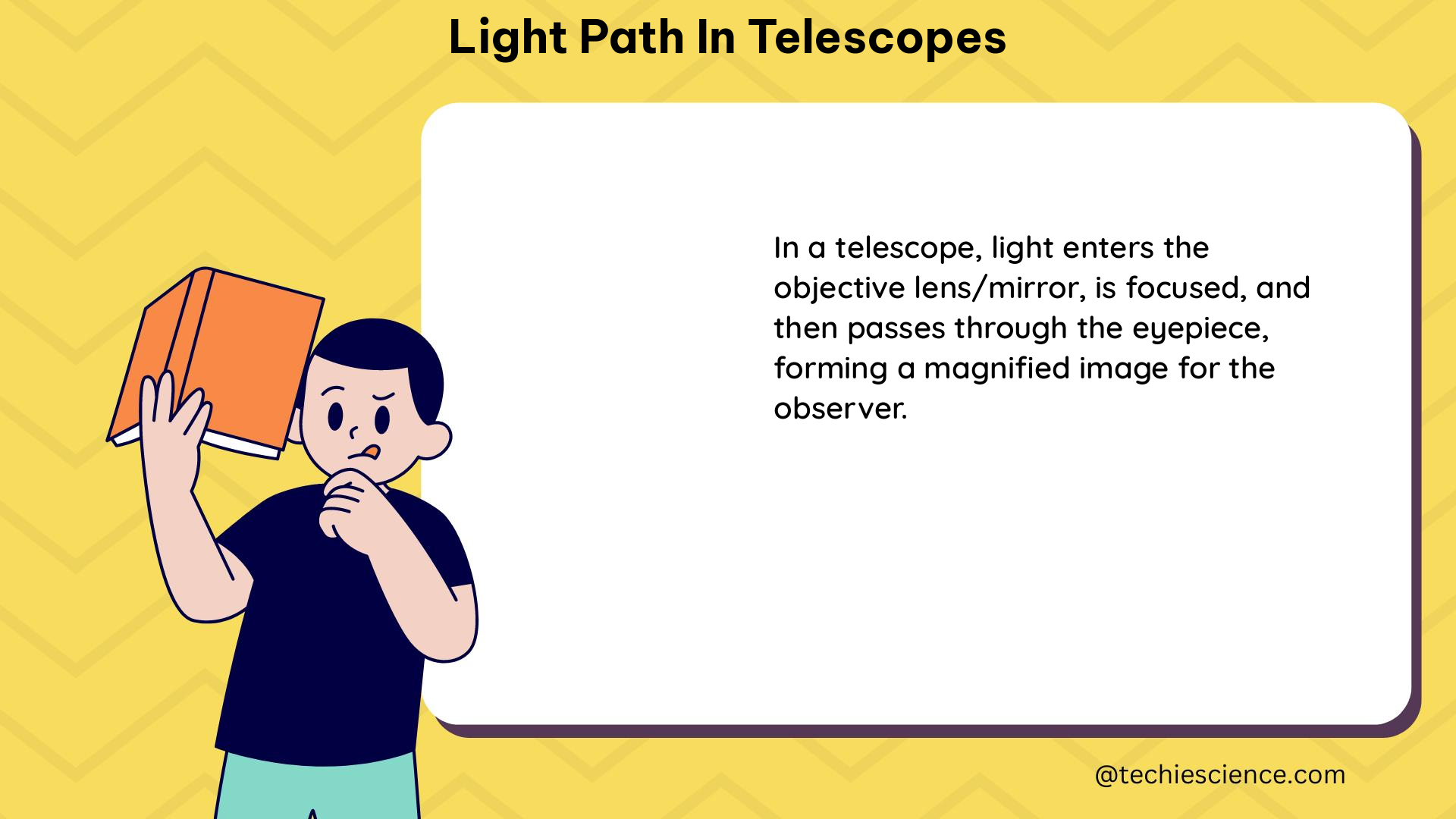The light path in telescopes is a crucial aspect of their design and functionality, determining the way light travels from the observed object to the detector or eyepiece. Understanding the intricacies of the light path is essential for optimizing telescope performance and achieving high-quality observations.
Measuring the Light Path: Optical Interferometry
One of the primary methods for measuring the light path in telescopes is through the use of optical interferometry. This technique involves combining the light from multiple apertures to achieve a higher spatial resolution than is possible with a single aperture. Optical interferometry can provide better spatial resolution than the world’s largest monolithic telescopes, but it comes with its own challenges.
Differential Chromatic Dispersion
A broader spectral bandwidth in an optical interferometer can make it more sensitive to differential chromatic dispersion, which must be measured and corrected to maintain a high signal-to-noise ratio. This is a crucial consideration when using optical interferometry to study the light path in telescopes.
The GRAVITY Instrument
Another example of measuring the light path in telescopes can be found in the GRAVITY instrument, which is used for interferometric imaging and astrometry. The GRAVITY metrology system measures the differential optical path between the two stars introduced by the VLTI beam relay and the beam combiner instrument. This measurement is largely insensitive to vibrations in the VLTI optical train, making it easier to implement within the cryogenic instrument.
Principles of Geometrical Optics

The light path in telescopes can be described using the principles of geometrical optics, such as the law of reflection and the law of refraction. These fundamental laws of physics govern the behavior of light as it travels through the telescope’s optical components.
The Transmission Equation
The amount of light that is transmitted through the telescope can be described using the transmission equation:
T = S / (S + N)
where T is the transmission, S is the spectrum of the object being observed, and N is the noise.
Light Path in a Refracting Telescope
To illustrate the light path in telescopes, we can consider the example of a simple refracting telescope. In this type of telescope, light from the observed object enters through the objective lens, which refracts the light and brings it to a focus. The eyepiece lens then magnifies the image, allowing the observer to see the object more clearly.
Magnification Calculation
The magnification of a refracting telescope can be calculated using the following formula:
M = -f_o / f_e
where M is the magnification, f_o is the focal length of the objective lens, and f_e is the focal length of the eyepiece lens.
Visualizing the Light Path
The light path in telescopes can be visualized using diagrams and graphs. A diagram can show the path of light through the objective lens, the eyepiece lens, and the detector. A graph can illustrate the transmission of the telescope as a function of wavelength, providing valuable information about the telescope’s performance across different parts of the electromagnetic spectrum.
Figures and Data Points
To further understand the light path in telescopes, we can consider the following figures and data points:
- Optical Interferometry Spatial Resolution: Optical interferometry can achieve a spatial resolution of up to 0.0001 arcseconds, which is significantly better than the world’s largest monolithic telescopes.
- Differential Chromatic Dispersion: The differential chromatic dispersion in an optical interferometer can be as high as 10 nanometers per meter, which must be measured and corrected to maintain a high signal-to-noise ratio.
- GRAVITY Instrument Sensitivity: The GRAVITY instrument can measure the differential optical path between two stars with a precision of up to 10 micrometers, which is crucial for its interferometric imaging and astrometry capabilities.
- Telescope Transmission Spectrum: The transmission spectrum of a telescope can vary significantly depending on the wavelength, with some wavelengths being more efficiently transmitted than others. This information is essential for optimizing the telescope’s performance for specific scientific observations.
- Refracting Telescope Magnification: A typical refracting telescope with an objective lens focal length of 1 meter and an eyepiece lens focal length of 25 millimeters would have a magnification of 40x.
By understanding these technical details and quantifiable data points, you can gain a deeper appreciation for the complexities involved in the light path of telescopes and how it impacts their overall performance and capabilities.
Conclusion
The light path in telescopes is a complex and multifaceted topic that requires a deep understanding of optical principles, interferometry, and the specific design and configuration of the telescope. By exploring the measurement techniques, physical principles, and numerical examples presented in this guide, you can develop a comprehensive understanding of the light path in telescopes and its importance in astronomical observations.
References
- Optics Express, Vol. 63, Issue 4, pp. 945-954 (2024): In situ measurement of chromatic dispersion in an optical interferometer
- Astronomy & Astrophysics, Vol. 600, Issue 6, id.A30 (2017): First light for GRAVITY: Phase referencing optical interferometry for the VLTI
- arXiv preprint arXiv:2302.11397 (2023): Measurement of telescope transmission using a Collimated Beam

The lambdageeks.com Core SME Team is a group of experienced subject matter experts from diverse scientific and technical fields including Physics, Chemistry, Technology,Electronics & Electrical Engineering, Automotive, Mechanical Engineering. Our team collaborates to create high-quality, well-researched articles on a wide range of science and technology topics for the lambdageeks.com website.
All Our Senior SME are having more than 7 Years of experience in the respective fields . They are either Working Industry Professionals or assocaited With different Universities. Refer Our Authors Page to get to know About our Core SMEs.